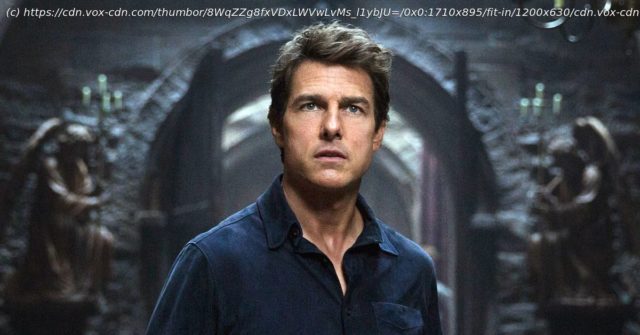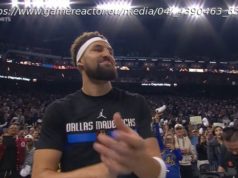Universal’s Dark Universe movies, starring Dracula, Frankenstein, the Mummy, and more, may have officially ended as a shared universe, but it lives on through these movies.
It’s an enduring internet joke, and understandably so: Repost that infamously tweeted photo of multiple stars lining up to herald the creation of the Dark Universe, the extended cinematic universe planned to kick off with the release of 2017’s Tom Cruise-led The Mummy and discussed in the press since 2014.
The blueprint appeared simple: Universal’s equivalent of the Marvel or DC movies would integrate its famous Universal Monster characters into a multifilm and presumably multimedia franchise, powered by some of the biggest names in Hollywood. Johnny Depp would play the Invisible Man! Javier Bardem would play Frankenstein’s Monster! Russell Crowe already shot his part as Dr. Jekyll and Mr. Hyde in The Mummy! These stars were photographed (or at least composited) together with Cruise! It was all happening!
And then, of course, it didn’t. Cruise’s Mummy didn’t even make Scorpion King money in North America, and the whole project was scotched. More than half a decade later, the photo is still trotted out as an example of Hollywood hubris. Presumably that official Dark Universe account remains active (and, as such, open to reposts) as a monument, to remind other architects of shared universes that they ought to stay humble, lest they turn into an evergreen joke.
At the same time, this year has served as a potent reminder that, in its way, the Dark Universe never really went anywhere. Though the Universal Monsters haven’t ever matched their initial 25-year classic period, where a less tightly linked (but still interrelated) universe produced nearly 50 movies (and at its peak released them at a Marvel-like pace of three or four per year), they’ve been back in action for another quarter-century at this point, equaling the original run in longevity if not total filmed output.
Most of the classic Universal Monsters, along with several new contenders, have been represented on the big screen in the past 25 years, albeit not with the same interconnected, ultra-lucrative glory the studio had its eye on in the wake of Marvel’s success. With two of this year’s entries, Renfield and The Last Voyage of the Demeter, joining their brethren in at-home streaming for spooky season, let’s take another look at that not-so-new world of gods and monsters. There may be more — and better — movies to the Dark Universe than you originally thought.
But first, a quick guide to the movies we are going to run through here, and which are worth your time.
Watch: The Mummy (1999); The Wolfman (2010); The Invisible Man (2020); Bride of Chucky (1998); Seed of Chucky (2004); the Halloween sequel trilogy (2018-2022); Hulk (2003); Riddick (2013); M3GAN (2023)
Consider: The Mummy Returns (2001); Van Helsing (2004); Dracula Untold (2014); The Mummy (2017); Renfield (2023), almost entirely because of Nicolas Cage; The Last Voyage of the Demeter (2023)
Skip: The Mummy: Tomb of the Dragon Emperor (2008)The First Wave: The Mummy (1999), The Mummy Returns (2001), The Mummy: Tomb of the Dragon Emperor (2008), Van Helsing (2004)
The original Universal Monsters era lasted from 1931 until roughly the mid-1950s, at which time Hammer Films grabbed the monster-horror torch and carried it into the 1970s. In the 1980s, slasher pictures ruled the horror genre, and for much of the 1990s, the biggest slasher franchises languished in late-period sequel hell while the biggest studios largely shied away from horror all together. While Universal did release some titles that communed with their monster-movie past (like the short-lived Tales from the Crypt movies), it was actually Sony that produced big-budget, star-laden features about Dracula, Frankenstein’s Monster, and the Wolfman in the first half of 1990s. (Bram Stoker’s Dracula, Mary Shelley’s Frankenstein, and just plain Wolf make for a neat unofficial trilogy.)
By the end of the decade, Universal was back in the game with The Mummy, which took one of the creakier Universal Monsters features and reimagined it as an Indiana Jones-ish adventure movie with some horror elements. Audiences embraced it, and in classic Hollywood studio fashion, Universal interpreted the lesson here with a heavy dose of myopia: Rather than encouraging the studio to revive more of their monsters, the popularity of The Mummy was turned into a mandate for… more of The Mummy. And they weren’t necessarily wrong: The Mummy Returns was a big hit, too, giving director Stephen Sommers the leeway to make the monster mash of his dreams: Van Helsing, in which the vampire hunter from Dracula becomes a strapping, brusque Hugh Jackman and crosses paths with Dracula, Frankenstein’s Monster, and Mr. Hyde, the wretched alter ego of Dr. Jekyll.
Even more than the first two Mummy movies, Van Helsing is a lot: A lot of screeching banshees, a lot of visual effects, a lot of Eurotrash mincing from Richard Roxburgh as Dracula, a lot of cartoony Transylvanian accent in Kate Beckinsale’s voice. Several more monster movies in this vein might have been exhausting (and plenty of viewers were exhausted by Van Helsing well before its credits rolled), but the Sommers approach to monster horror has its garish charms. That’s never more apparent than when watching The Mummy: Tomb of the Dragon Emperor, in which new director Rob Cohen misses the easy layup of “make another Brendan Fraser-starring Mummy adventure movie.






